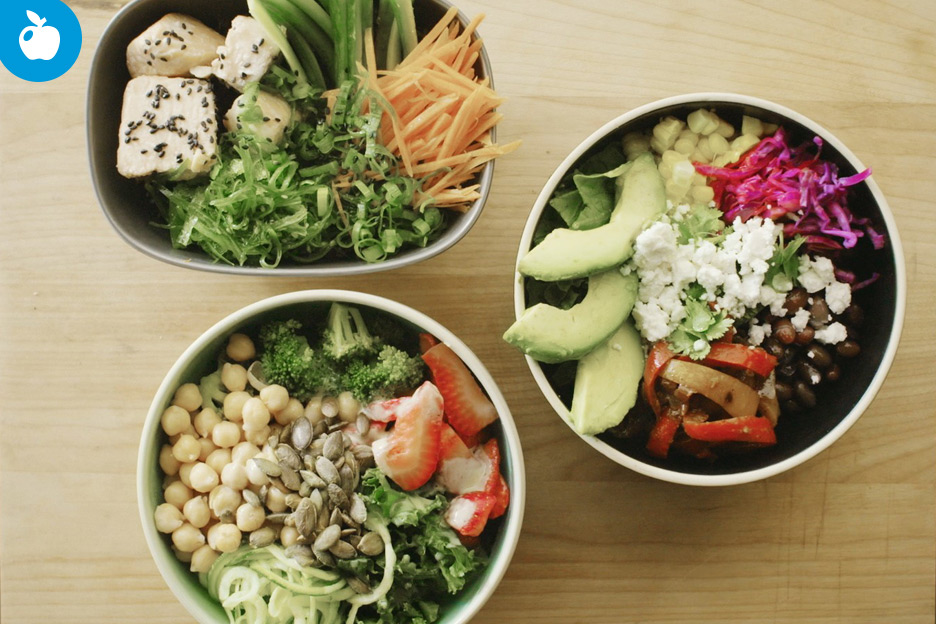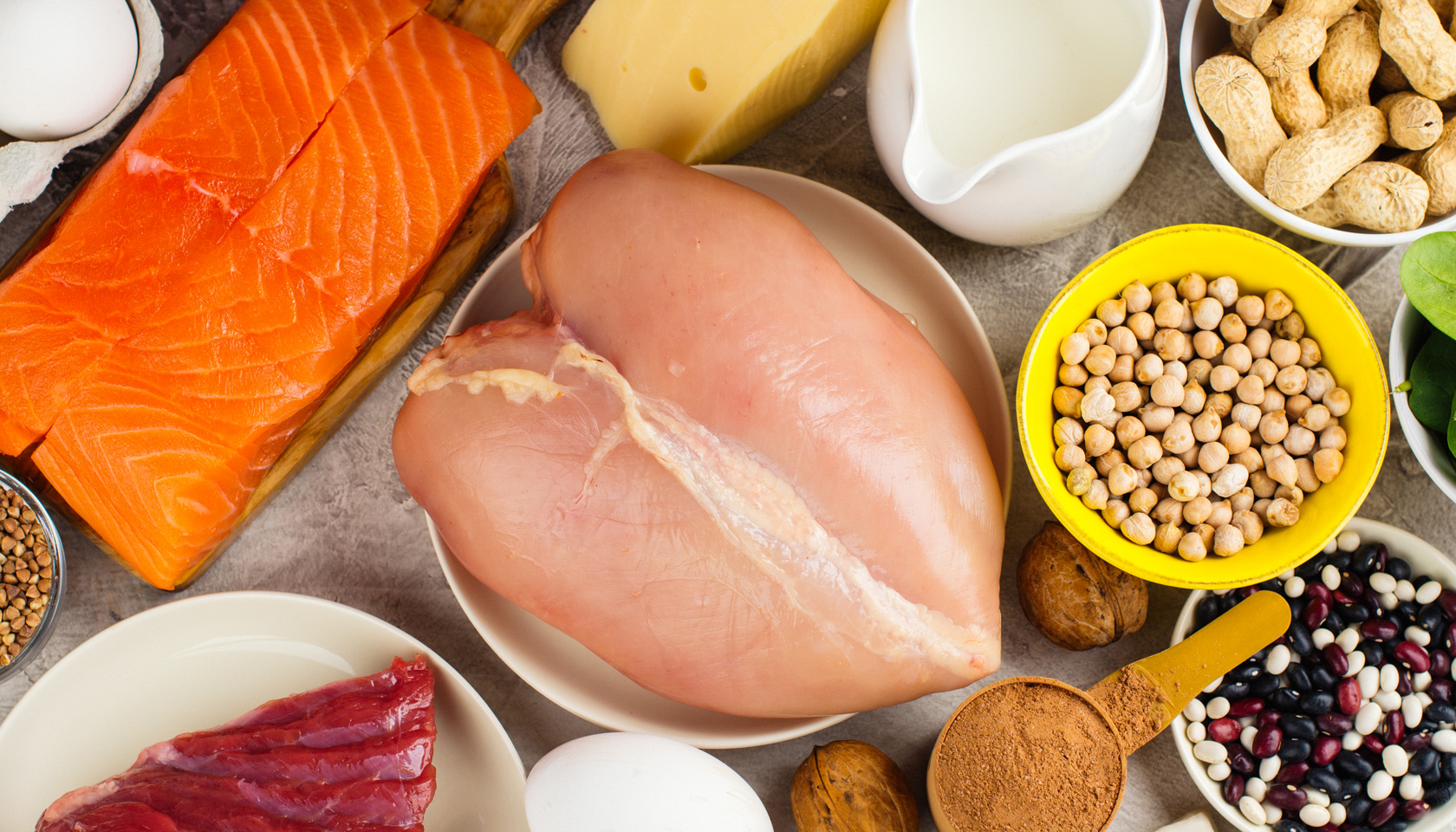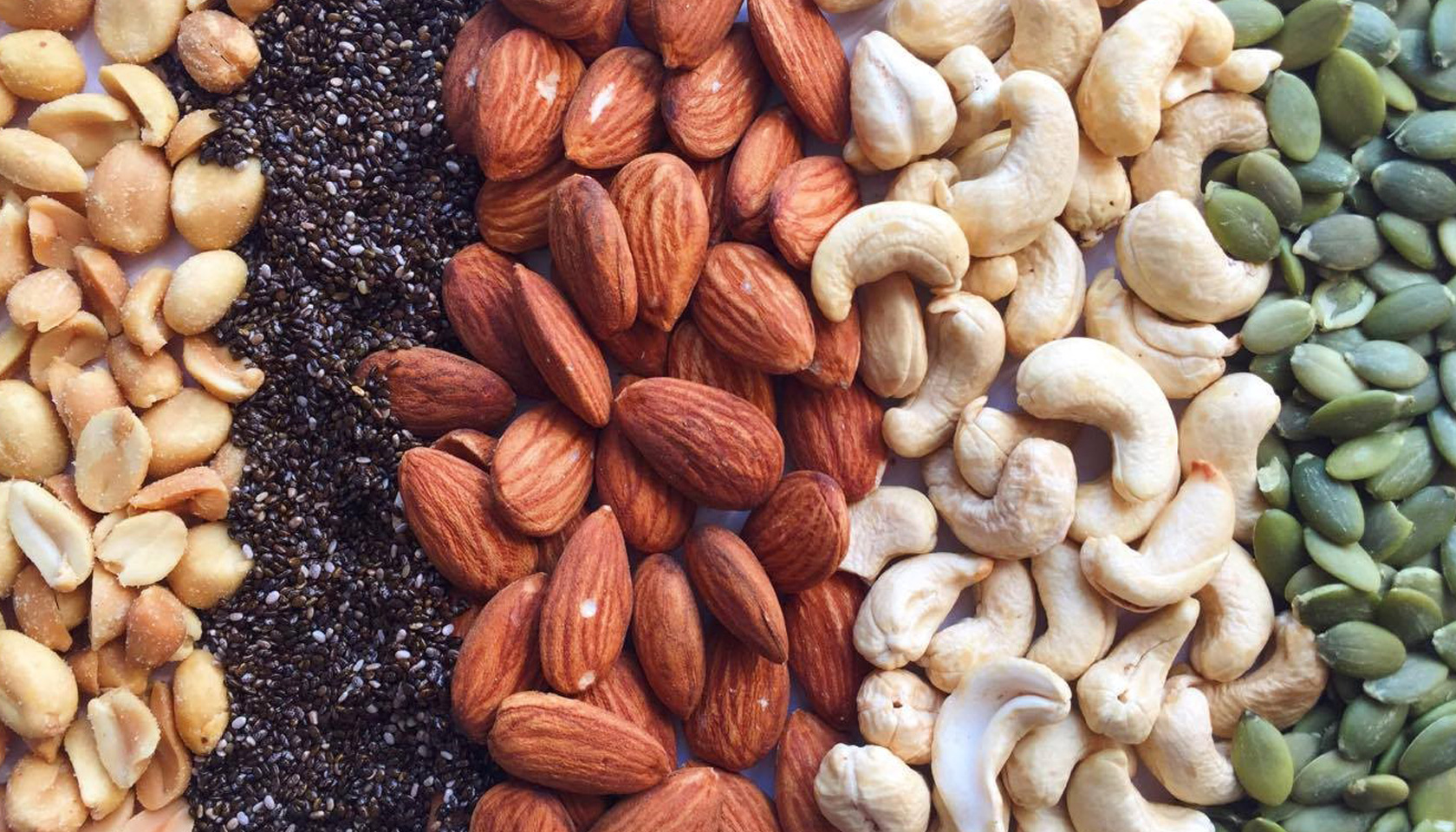No matter what they’re called—Buddha bowls, macro bowls, grain bowls, meal salads—we’re crazy about meals in a bowl! They’re colourful, comforting and the perfect way to turn our leftovers into a healthy feast. To master the fine art of the bowl, focus your creative energies on these two key principles: balance and contrast!

BALANCE
To satisfy your hunger and provide your body with a cornucopia of nutrients, fill your bowl with the following foods: whole grains, protein, an abundance of vegetables, healthy fats and, of course, a kick of flavour!
1
A high-energy base : Whole grains
Thanks to their combination of starch (carbohydrates) and fibre, whole grains make you feel full and provide stable energy for several hours after a meal. If you have an active day in store, give yourself a boost of energy with a one-cup helping of grains. If you’re planning to chill out, half a cup is enough.
Thanks to their combination of starch and fibre, whole grains make you feel full and provide stable energy.
To prepare grains, start by rinsing them quickly before cooking them in slightly salted water or in broth. Check online to find the right proportion of water to use to avoid turning your nifty grains into tasteless porridge! Instead of the old standbys brown rice and quinoa, try these grains on for size: millet, bulgur, buckwheat (kasha), amaranth, barley, kamut, farro, freekeh, oat groats, spelt, whole-grain pasta, corn, etc. You’re in for a pleasant surprise!
2
A filling element : Protein
Not only is protein very effective when it comes to satiety, but the body uses protein to build and repair its various components such as muscles, skin, hair, antibodies, hormones, etc. Therefore, you’ll want to include a good source of protein at every meal!
Not only is protein very effective when it comes to satiety, but the body uses protein to build and repair its various components.
From the plant world, legumes (chick peas, beans and lentils) and soy (edamame, tofu and tempeh) are also highly recommended. Add three quarters of a cup to one cup to your bowl!
Omnivores may enjoy cooked or raw fish (a poke bowl), poultry or meat. Ideally, you should use about a palm-sized portion. As a fast and convenient alternative, add two eggs or half a cup of cottage cheese.

3
Vibrancy : Two or three colours of vegetables
You’ve probably heard the expression “Eat the rainbow.” It’s a great metaphor that makes it easy to remember that each vegetable pigment provides a unique set of health benefits. Therefore, to make the most of the rainbow’s full spectrum, draw on your inner Picasso, and use a variety of colours! Aim to use about one and a half cups of vegetables overall.
Here’s a bit of colour inspiration:
- Green : Kale, spinach, romaine, arugula, bok choy, broccoli, asparagus, zucchini, Brussel sprouts, snow peas, sprouts, parsley, cilantro, basil…
- Colourful : Beet, red cabbage, onion, carrot, tomato, cauliflower, sweet potato, winter squash, radish, eggplant, bell pepper…
- Fruity : Mango, pomegranate, apple, pear, strawberry, peach, pineapple, dried fruit…
4
Healthy fats
In addition to enhancing taste, healthy fats keep the cardiovascular system happy and help the body assimilate vitamins A, D, E and K. Here a few ways to make the most of them in your meals:
- Drizzle one to two tablespoons of vinaigrette or vegetable-oil dressing (olive, canola, nut, etc.) on your bowl ingredients.
- Add creaminess with chunks of avocado, tahini or hummus.
- Sprinkle seeds over your ingredients for extra crunch (sesame, hemp, sunflower, pumpkin, flax, chia), roasted nuts (walnuts, almonds, cashews, pine, etc.) or peanuts.

CONTRAST
Once you’ve met the nutritional challenge, how do you turn the basic bowls elements into a truly succulent meal? The answer is obvious: Play up the contrasts! This second principle is sure to turn your meal into a culinary success story.
Once you’ve met the nutritional challenge, how do you turn the basic bowls elements into a truly succulent meal? The answer is obvious: Play up the contrasts!
What do we mean by contrast? Here are a few examples:
- Use alternate colours: yellow, green, red, white, pink…
- Include a variety of textures: creamy, firm, crispy, crunchy, soft…
- Integrate different shapes: cubes, rounds, sticks, grated, julienned, whole leaves…
- Play with temperature and cooking methods: raw, steamed, grilled, roasted, stewed…
- Balance the flavour: sweet, salty, acid, bitter, umami.
Wow! We’ve covered a lot of information in a short article! Here’s one last tip to lend an artistic flair to your creation: Draw inspiration from international sources. The possibilities are endless. Whether you choose an Asian, Mediterranean, Mexican, Maghrebin or Hawaiian unifying theme, success is guaranteed!